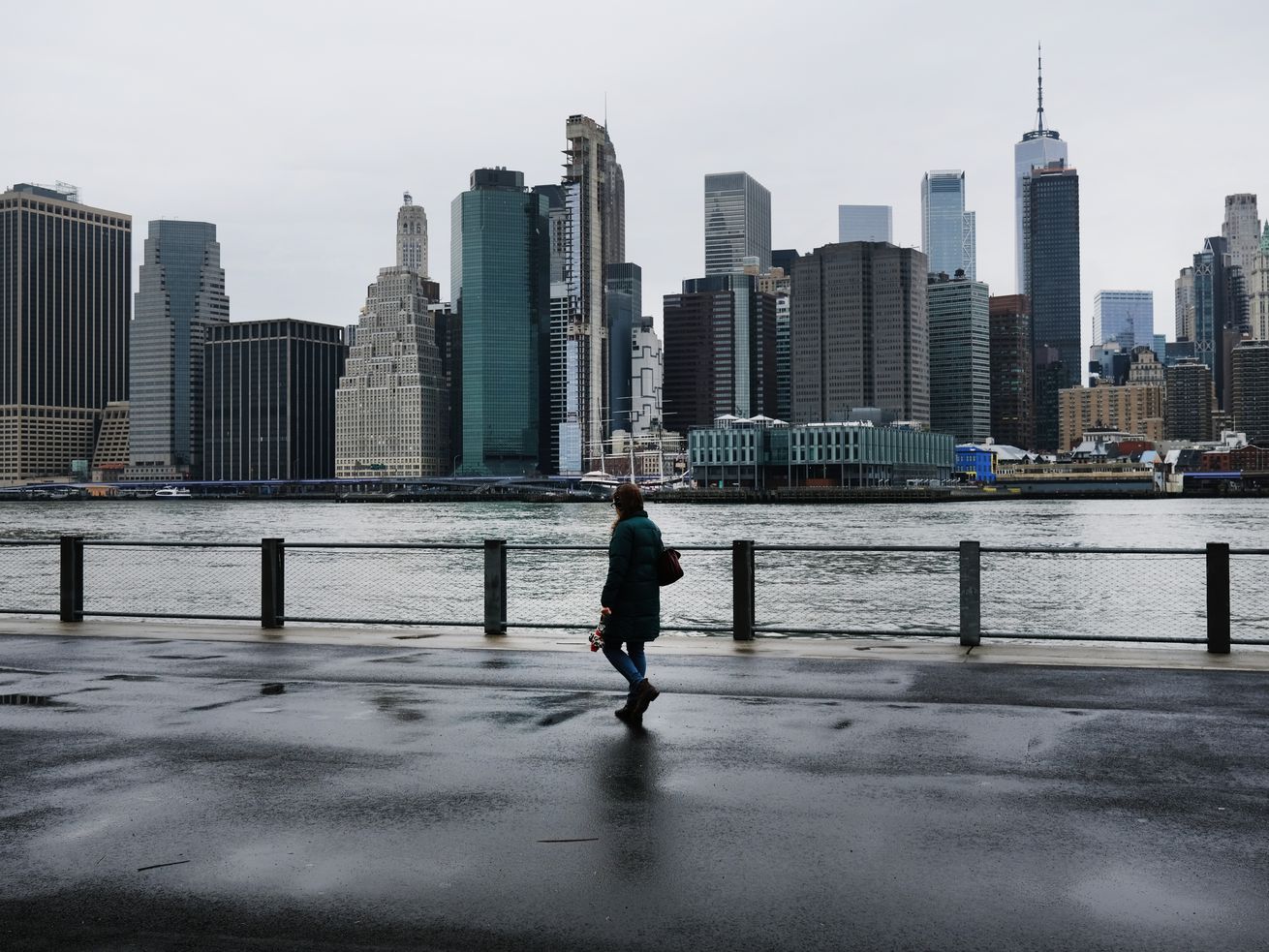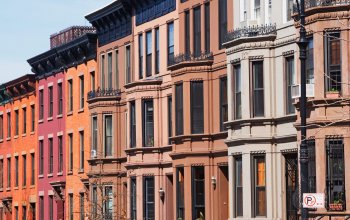
New York City has lost two of its greatest walkers

 A woman walks along the Brooklyn waterfront amid the COVID-19 pandemic. | Photo by Spencer Platt/Getty Images
A woman walks along the Brooklyn waterfront amid the COVID-19 pandemic. | Photo by Spencer Platt/Getty Images
Remembering Michael Sorkin and William Helmreich, lifelong devotees of traveling the city—and documenting its richness—on foot
The COVID-19 pandemic has all but suspended public life in New York City. Major avenues and boulevards whose sidewalks usually teem with pedestrians now sit empty; well-trafficked plazas and transit hubs are all but desolate; and in many neighborhoods, residents only leave their house for a short trip to the grocery store or pharmacy, no longer venturing out for a walk in the park or to their usual subway station.
Even as the novel coronavirus has taken from us the bustle so characteristic of New York, it has also taken from us two of the people who most appreciated that livelihood: The architect and critic Michael Sorkin and the sociologist William B. Helmreich, both of whom died in the past week after contracting COVID-19.
The two men did not come from the same discipline, nor did they see the city in the same way. Sorkin was an architect by trade, a trenchant critic for the Village Voice, and an inventive designer in his own right, always most attuned to the ways in which a stoop or a street corner could force a surprise encounter or a moment of awe. Helmreich was a sociologist whose early work focused on yeshivot and other Jewish communities, and as a result he focused less on a street itself than on the students, worshippers, and shop owners who called it home.
Both writers, though, were among New York City’s greatest walkers, lifelong devotees of the friction between the self and the world that can only happen when one is traveling on foot. Sorkin’s 2009 book Twenty Minutes in Manhattan, a masterpiece of urban appreciation, details the author’s daily walk from his Greenwich Village apartment to his Tribeca studio. Helmreich, meanwhile, devoted the last years of his life to walking every street in New York, publishing his discoveries in the 2013 book The New York Nobody Knows. (He planned to write companion volumes for each of the five boroughs, but only the Manhattan and Brooklyn editions have been published so far.)
Both writers also believed that fostering a beneficial friction between members of a community isn’t just about putting a lot of people in one place, but about creating places where those people can come together, both intentionally and unintentionally. What made New York City great in their eyes was not its sheer density, but the innumerable opportunities its inhabitants had to interact with one another. That may be by brushing up against each other on the subway, standing in line together to buy coffee from a cart, sitting across from each other on park benches, or merely walking, an action that Sorkin says is not just a form of travel but an “analytic instrument.”
Twenty Minutes in Manhattan, is an exercise in attentive observation, a testament to how much we gain by slowing down and considering our surroundings. It follows Sorkin as he leaves his apartment, bumps into his neighbors on his way down the stairs, and makes his way downtown through Washington Square Park and Tribeca. In his eyes, this brief jaunt becomes an odyssey through countless forms of life, from the “expressive importance” of jam-packed flea markets to the close-packed masses of Washington Square Park—its “kids, musicians, buskers, and marijuana dealers.” His own block becomes a “lateral stadium, ideal for viewing the passing parade,” the closeness of each stoop to the next allowing residents “to provide the kind of public presence that generates neighborly behavior—cleaning up dog poop, greeting people, taking care of the beleaguered plants and trees, and just generally fixing memory on the street.”
Helmreich went much farther afield than Washington Square Park, walking more than 6,000 miles in his attempt to traverse every street in New York. But his method had much in common with Sorkin’s: He took care to highlight not just whatever greasy-spoon diner or historical oddity was on a given block, but how he came to discover its existence in the first place. Helmreich took the subway to a new community, went up one street and down another, and stopped to talk to anyone and everyone he saw, asking them questions about the neighborhood and their daily lives. In this fashion, merely by coming into contact with his neighbors—which, for Helmreich, was the entire city—he gets the answers to questions most of us have never thought to ask, from the list of plants in a Bed-Stuy community garden to the history of the city’s ubiquitous Kennedy Fried Chicken chain. Most of the time these wonders were right there in plain sight, visible to anyone who bothered to pay attention.
It is exactly this kind of close contact with one’s neighbors that has become impossible in the wake of the COVID-19 pandemic. The city has closed restaurants and shops, discouraged commuting and unnecessary travel, and banned large gatherings, edicts that will likely remain in place for months. No one would dispute that these measures are necessary to stop the spread of the disease, but they have made New York into a ghost town as residents hunker down or flee altogether. What’s more, many of the places that have closed may never reopen; it is more than likely that the coming recession will force numerous small businesses into bankruptcy, sweeping away much of what is distinctive about today’s New York.
In the aftermath of the pandemic, it will be tempting to succumb to pure nostalgia, to lament how fundamentally the disease altered the fabric of the city. But neither Sorkin nor Helmreich ever indulged in such thinking: Sorkin may have railed against crystalline skyscrapers and starchitect condominiums, but he never declared New York ruined for good, and Helmreich always emphasized that the city was “not a static environment,” but “dynamic and constantly changing.”
New York will look very different after the pandemic than it did before, but it will remain an unthinkably dynamic place, more than capable of growing again into the city that played muse to both men as their shoes pounded its pavements.
Building accessible, convivial communities has never been an easy task, and it will not be easy to rebuild those environments in the years to come. But the barren city we presently find outside our stoops should encourage us to honor the memories of Sorkin and Helmreich by refusing to take for granted the small miracles of urban interaction. When the grate doors slide up again and the cafes set out their chairs along the sidewalk, we owe it to both men to cherish the friction that is so distinctive of New York, the communitarian froth that bubbles up when enough people are around each other for enough time.
The best way to do this, both men would tell us, is by walking—as near or as far from our stoops as we please, but always with attention, with charity, and with gratitude for the city they so loved.
Love where you live
Be Heard at Go Home NY
Be heard! Leave your apartment, condo, and coop building reviews at Go Home NY! Know a building's managers are awful? Have the inside line on a perfect building? Anything in between? Express your voice and be heard. Leave a review at Go Home NY.


